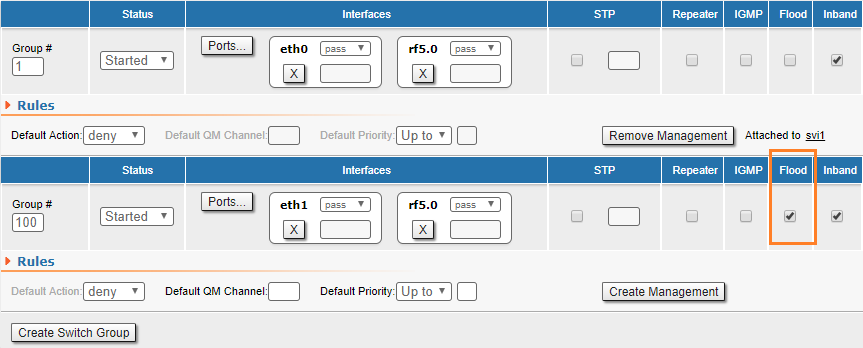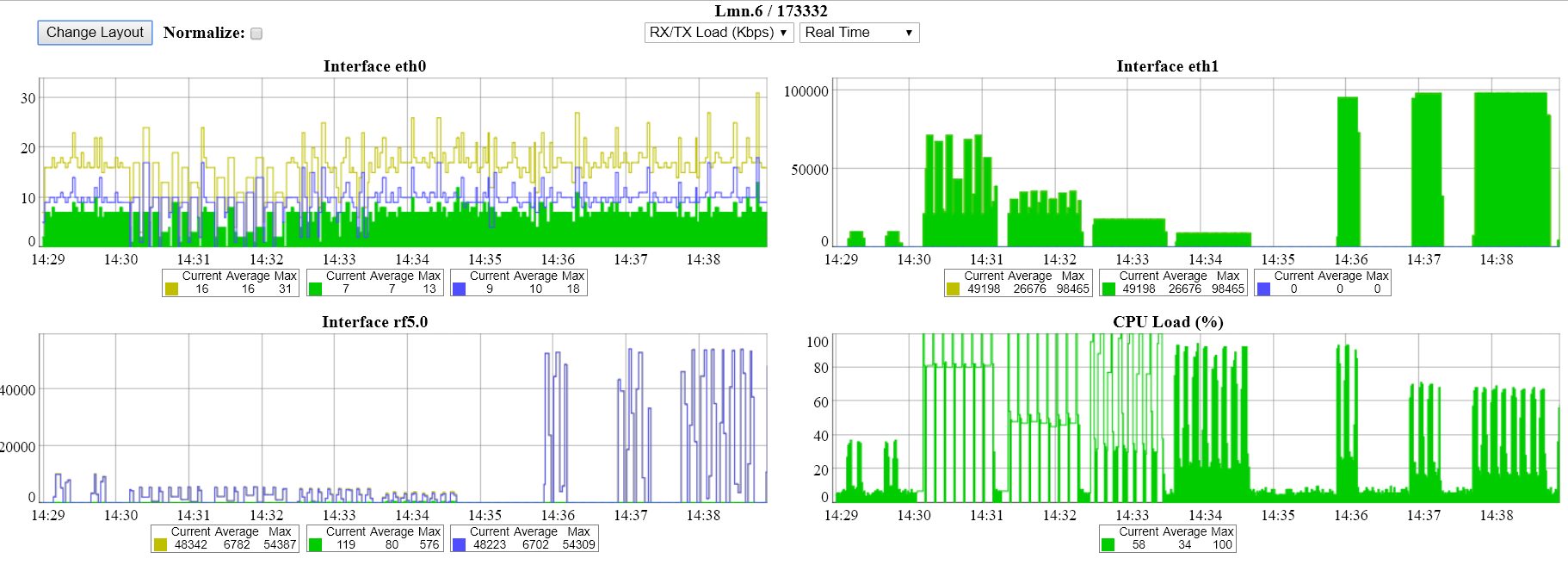In case when the packet's destination MAC address is unknown for the switch (not included in its routing table), the device sends this packet to all hosts of the network, except for the sender interface.
This phenomenon is called unicast-flood. The most common reasons of unicast-flood are:
- Switch address table overflow (a common problem in large networks);
- Hosts with ARP timers greater than the address cache timeout;
- Incorrect STP settings.
InfiNet Wireless devices provide unicast-flood protection. In this case, you can allow unlimited unicast-flood without protection filter by setting the check box in MAC Switch settings:
R5000 device sends a packet with an unknown MAC-address to all ports until it receives a response with the packet which contains this address as the sender. After this the device will "learn" (i.e., it will add the MAC-address to its address table and reserve it for the port where it has been received). If the device can't learn in 4 seconds, and packets are still arriving, traffic to this direction will be blocked for 4 seconds. Then the process repeats.
This process has the following representation in the graphs, for example, in the device statistics graphs:
Also, unicast-flooding can be detected in the "Switch Statistics" section of the "Device Status" tab:
R5000 devices react in a similar manner to unidirectional traffic, which is not a unicast-flood. This happens, for example, in case of generating "artificial" traffic (using specialized devices or software) or when the real traffic is unidirectional. In these cases, it is recommended to allow unlimited unicast-flood without protection filter by checking the appropriate box in the settings (see above).


